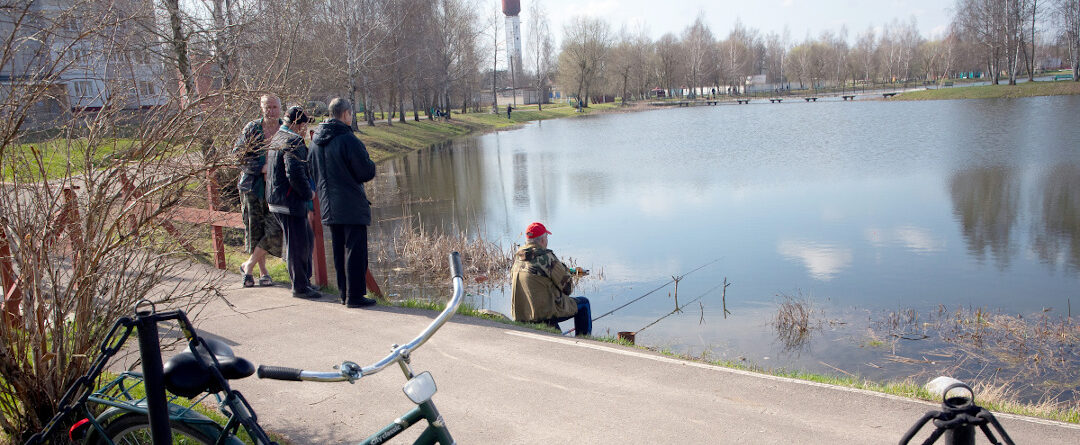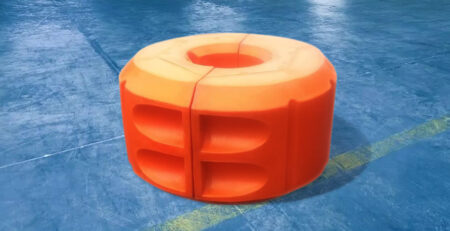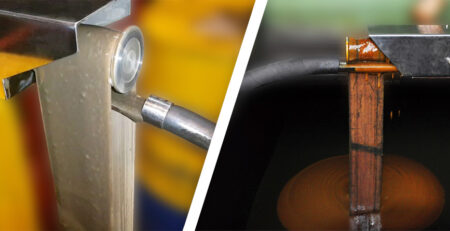The problem of liquidation of the settling ponds on the territory of the washing and steaming station “Odessa-sorting” and possible ways to solve it
Soloviev V.I.
Gubanov V.V.
Kozhanova G.A., Gudzenko T.V., Krivitskaya T.N.
Shurova N.M., Bobreshova N.S., Belyaeva T.L.
The settling ponds and the evaporator pond of the Odessa washing-steaming station (OPPS) are the largest local source of chronic hydrocarbon pollution of the air basin, adjacent territories and water areas, as well as underground waters of the Kuyalnitsa Peresypi. The total pond area is 4.50 ha. Currently, about 30,000.00 m3 of oil-containing undercarriage water has accumulated in them, — up to 23,000.00 m3 of non-cargo oil products in the form of oil sludge and bottom sediments contaminated with oil products with a concentration of oil products of 900.00-980.00 mg/y. About 35,000 tons of oil products evaporate from pond surfaces every year.
The above facts testify to the need to create a complex technology for neutralization of oil-containing bilge waters and disposal of bottom sediments contaminated with oil sludge.
During the implementation of technological solutions for the liquidation of ponds and cesspools, secondary waste should not be generated, that is, it is necessary to ensure the ecological safety of the area where the OPPS is located. In this aspect, biotechnologies based on the use of destructive bacteria and biopreparations attract attention.
The use of microbiological methods in the liquidation of oil pollution of soil and water surfaces is often practically the only possibility to restore natural biocenoses. In addition, microbiological methods are the cheapest compared to other methods. Microbiological destruction of hydrocarbon oil in the soil is ensured, mainly, in two ways: stimulation of the development of the indigenous oil-oxidizing microflora of soil biocenoses by introducing additional biogenic food sources and using biopreparations created on the basis of selected microorganisms-destroyers («Olevorin», «Uni-rem», « Valentis, Bio-rem, Naftox, Micromycet, Putidoil, Desna, etc.). When petroleum products penetrate to a greater depth, the contaminated soil can be removed and sanitized in so-called biocells and kagatas.
Reducing the content of oil products in the soil can also be carried out with the help of oligochaete cultures, which in the process of their vital activity improve its structure, increase the content of humus and enrich it with microflora.
All of the above data on the use of bacterial preparations and oligochaete cultures refer to contaminated soils with a maximum oil content of 25.00-50.00 mg/year. The content of petroleum products in sludge from OPPS ponds can reach 980.00 mg/year. There is no information on the use of microbiological methods for the utilization of such oil sludges in the literature.
The purpose of the work was the development of biological methods for the utilization of bottom deposits of oil sludge pond-settlement OPPS and their approval in natural conditions.
Microbiological, chemical, phytotoxicological and other research methods were used in the research. For the destruction of oil products in sludge and bottom deposits of ponds, they used the bacterial preparation “Econadine”, a liquid culture of oil-destroying bacteria and cultures of oligochaetes – Eisenia fetida and Enchytraeus irregularis. Первый из них – E.fetida (Californian variety), widely used in vermiculture for the production of biohumus.
The preparation “Econadine” is a sorbent and destructor of hydrocarbon oil, based on the use of non-pathogenic highly active bacteria-destructors of the genus Pseudomonas, immobilized by a special technology on a natural organic substrate – peat. “Ekonadine” combines the positive properties of natural synthetic sorbents with bacterial preparations for the biodegradation of hydrocarbon oils. The preparation absorbs a wide range of oils and oil products with their subsequent biodegradation in water, bottom sediments and soil. “Econadine”, protected by two patents /1, 2, 3, 4/.
For the development of biotechnologies, detoxification and neutralization of oil sludge, a complex of laboratory studies and experiments was carried out in natural conditions at experimental sites located on the territory of OPPS. On experimental sites, oil sludge was treated with the preparation “Econadine” in combination with natural organic and mineral components, such as sand, clay, plant residues, wood sawdust. Optimum quantitative ratios of specified components were worked out. At the control station, the preparation “Ekonadine” was not imported. Observations were conducted in dynamics.
Original biotechnological methods were developed. Evaluation of the efficiency of utilization of oil sludge bottom deposits was carried out using microbiological and phytotoxicological methods. Hydrocarbon oil content was analyzed using the ICS method.
As a result of an analytical survey of the territory, which was formed after backfilling parts of the pond-evaporator with soil more than 10 years ago, it was established that the vertical section of the soil was contaminated with oil products of all horizons, including the surface. Accumulation of oil products by herbaceous plants was observed. The content of petroleum products in the representative plants of local phytocenoses was 1.80-2.00 mg/g of dry weight. The given data testified that the method of backfilling the pond-accumulator with soil did not provide ecological cleanliness. Chemical analyzes showed that the content of hydrocarbon oil in various oil sludge samples was 848.00-980.00 mg/year. At the same time, both in samples of oil sludge bottom deposits, taken from the settling pond, and when taking samples from the evaporator pond, a multicomponent composition of hydrocarbon oil was established, indicating oxidation processes. At the same time, less oxidized forms were noted in bottom sediments from the settling tank, compared to those from the evaporator pond.
A complex inspection of ponds OPPS also included a chemical analysis of the water in them. As a result of the research, it was established that the content of oil products in the water of the settling ponds was 8.65-9.20 mg/l, in the evaporator pond – 4.13 mg/l, in the buffer pond – 2.88 – 4.13 mg/l .
Microbiological studies of oil sludge from OPPS ponds revealed the presence of heterotrophic and oil-oxidizing microflora in it. It was established that the number of oil-oxidizing bacteria in the bottom deposits of oil sludge in ponds in the summer period reached 3.8×106 cells/g, and in the evaporator pond — 5.0×105 cells/g, which indicated biodegradation processes of oil products in pond ecosystems.
Natural observations at field sites showed that biopreparation “Econadine” quickly localized water-fuel oil emulsions of bottom deposits of oil sludge with subsequent deep transformation of hydrocarbon oil. Conducted field experiments proved the possibility of obtaining an ecological effect in a very short period of time. An effect was registered by microbiological and chemical analyses, as well as by biotesting using higher plants as test objects. Microbiological analyzes showed an increase in the titer of oil-oxidizing bacteria with an increase in the duration of exposure. The rapid dynamics of the decrease in the content of petroleum products during the observation period were observed: with initial concentrations of 900.00-980.00 mg/g to 54.00 mg/g; 11.50 mg/year; 5.26 mg/year; 1.20 mg/g, respectively, after 0.5-1-2-2.5 months.
Visual observations showed that the soil substrate formed at the experimental field site was first loose, then structured, water-permeable, without the smell of petroleum products. Its biological value was also evidenced by the results of biotesting: at the experimental site, the germination of plants a week after sowing was 85.0-100.0%. Biomass of plants on the experimental site exceeded that on the control plot by more than 3 times. Also, it should be noted that transplanted plants from the natural phytocenosis took over and actively vegetated in the experimental plot. All types of transplanted plants were in a physiologically active state, did not lose turgor in the first and subsequent periods of observation, intensive development of the root system and green biomass was noted. At the same time, green plants were not only an indicator of the phytotoxic activity of oil sludge, but also an active component of its utilization, as they intensified the processes of biodegradation of oil pollution, and also contributed to the structuring of the formed soil substrate.
At the same time, at the control field site, out of the entire variety of transplanted plants, only single specimens of the Austrian wormwood survived (out of 4 types of plants used). Plants lost turgor and did not develop at all during exposure. In the control, a sticky, oily, viscous mass, waterproof was recorded.
Experiments with cultures, oligochaete E.fetida E.irregularis testified to the possibility of their use in a complex with microbiological methods in liquidation of pond OPPS. However, as studies have shown, a worm should be introduced into the recultivable layer of contaminated soil after reducing the content of petroleum products in it to 25.00 mg/g — for E.fetida, and 45.00-50.00 mg/g — for E.irregularis.
The given data testified to the effectiveness of the developed biotechnology of oil sludge utilization by microbiological methods using the preparation “Econadine”.
List of references
- Заява на патент України № 97094657 від 17/Д9/97р. Рішення №1213. Спосіб одержання бактеріального препарату для деструкції
органічних речовин. / Кожанова Г.А. - Заява на патент України № 97094658 від 17/09/97 Препарат, який
використовуєтьіся для сорбції та деструкції органічних сполук/
КожановаГ.А. - Кожанова ГА., Васильева Т.В., Бобрешова Н.С., Беляева Т.А., Гудзенко Т.В. Нефтяные загрязнения, ,их биологическая активность и проблемы ликвидации // Микробиол. журнал. — 1994.- Т.56.-№2.- С.68.
- Кожанова Г.А., Бобрешова Н.С., Гудзенко Т.В. та інші. Біопрепарат «Еконадін» в стратегії захисту від нафтового забруднення акваторій та берегових об’єктів море господарського комплексу Чорноморсъкого басейну // Науково-технічний журнал «Вісник Українського Будинку економічних та науково-технічних знанъ». — №2. -1998. -С. 68- 69. Сб. «Проблемы сбора, переработки и утилизации отходов». Одесса, ОЦНТЭИ, 2000г., с 266-270.










